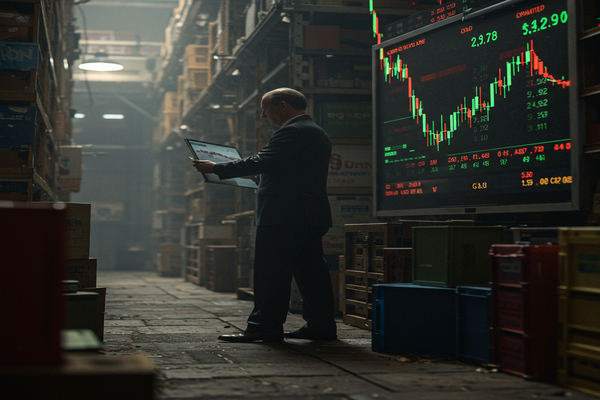
Trump’s Asia tour won a royal welcome in Japan and aims to secure a trade war truce with Chinese President Xi Jinping. This matters now because meetings and quick deal signals can reduce near term policy uncertainty for markets in the United States, Europe and Asia. In the short term, tariff signals can prompt importers and exporters to change order timing and FX flows. Over the long term, any agreement would reshape supply chains, critical minerals partnerships and trade patterns compared with spikes in protectionism seen in recent years.
Trade truce hopes and immediate market implications
The central theme from the trip is a bid to pause or temper tariff escalation between the U.S. and China. Traders and corporate treasuries respond quickly to such high level diplomacy because tariff announcements historically trigger sharp swings in equities, bond spreads and currency moves. A credible truce could reduce volatility in U.S. and Asian equities and ease safe haven demand that has supported the dollar and U.S. Treasuries. Conversely, failure to land a durable accord would likely reinforce risk aversion and tilt investors toward defensive sectors.
Markets have faced similar moments before when summit diplomacy produced short lived easing then renewed friction. The current phase differs because it follows a period of strategic competition that included tariffs, export controls and investment curbs. Any signal that Washington and Beijing can agree even limited measures may feed into near term repositioning by portfolio managers. However, negotiators will still need to clarify scope, duration and enforcement to alter long term capital allocation decisions.
Tariff action drives order timing and supply chain pressure
One clear market effect reported in the Tariff Watch notes is that U.S. importers moved to place spring orders earlier to avoid potential tariff hikes. That behavior compresses normal ordering cycles and can create temporary boosts for exporters and logistics firms while heightening inventory risk for importers. For companies with thin margins, accelerated imports raise working capital demands and can amplify demand for short term credit.
Payment flows and freight rates are also sensitive to tariff expectations. Ports and shipping lanes serving major U.S. gateways typically see volume spikes when buyers front load orders to escape tariffs. In Europe and parts of Asia, similar patterns can emerge if trade partners expect re-export restrictions or higher duties. For currency markets, accelerated dollar outflows for inventories can reduce local currency resilience in emerging markets that rely on imports of intermediate goods.
Critical minerals, rare earths and new trade arrangements
Beyond tariffs, the trip highlighted deals on trade and critical minerals in Southeast Asia and a wider push by Beijing to strengthen economic ties with neighbors. Policymakers are treating critical minerals and rare earths as strategic assets. Reports that high level Chinese officials will travel to Brussels to discuss rare earth export curbs underscore the risk that export policy can become a lever in broader geopolitical bargaining.
For commodity markets, tighter export controls or export coordination could lift price volatility in rare earths, lithium, cobalt and other inputs used in electric vehicles and electronics. That would matter for manufacturers and for countries that are building domestic processing chains. Meanwhile, trade deals in Southeast Asia or assurances on mineral flows can support investment into alternative supply capacity. The market response depends on clarity, timing and whether buyers can find substitutes.
Regional diplomacy, central bank context and growth outlook
Japan gave a formal welcome, yet officials said U.S. and Japanese discussions did not directly cover Bank of Japan policy. That suggests leaders are keeping trade and monetary policy discussions compartmentalized. Such separation can reassure markets that trade negotiations will not immediately push central banks into reactive posture. However, central bank commentary will remain a watch point because export and growth signals feed into inflation and rate expectations.
Other regional moves matter too. China pressing for stronger economic ties after ASEAN meetings could smooth trade frictions in Asia. Canada signaled engagement through planned meetings between Governor Mark Carney and President Xi at APEC. Brazil’s president said Washington had guaranteed a trade deal, while India highlighted a strong growth outlook and trade diversification amid U.S. tariff pressures. These moves show a multipolar response where countries are adjusting trade links to secure supply, market access and investment.
Market narratives and scenarios to watch
There are a few scenarios investors and corporates will be tracking closely. First, a limited truce that pauses new tariffs while leaving existing measures in place would likely ease near term volatility but still leave structural uncertainty for long term supply chain planning. Second, a comprehensive agreement that addresses tariffs and critical minerals would be a stronger positive for global trade volumes and risk assets. Third, if talks falter and export controls expand, commodity and industrial supply chains could face renewed fragmentation and price premiums for secure sources.
In the immediate days after summit reports, watch shipping data, import order flows, and corporate inventories as leading indicators. Equity volatility indices, local bond spreads in emerging markets and safe haven currencies will show whether markets view diplomacy as substantive. Meanwhile, commodity markets sensitive to minerals and freight markets could price in supply reallocation risks.
Overall, the trip and associated Tariff Watch headlines show that diplomacy continues to be a primary channel that moves markets. The difference between short term order timing and long term supply chain restructuring will determine whether corporate capex and trade patterns adjust gradually or more abruptly. For now, investors and companies should monitor official communiques, follow up negotiations and trade data to gauge whether the rhetoric converts into sustained policy change.












